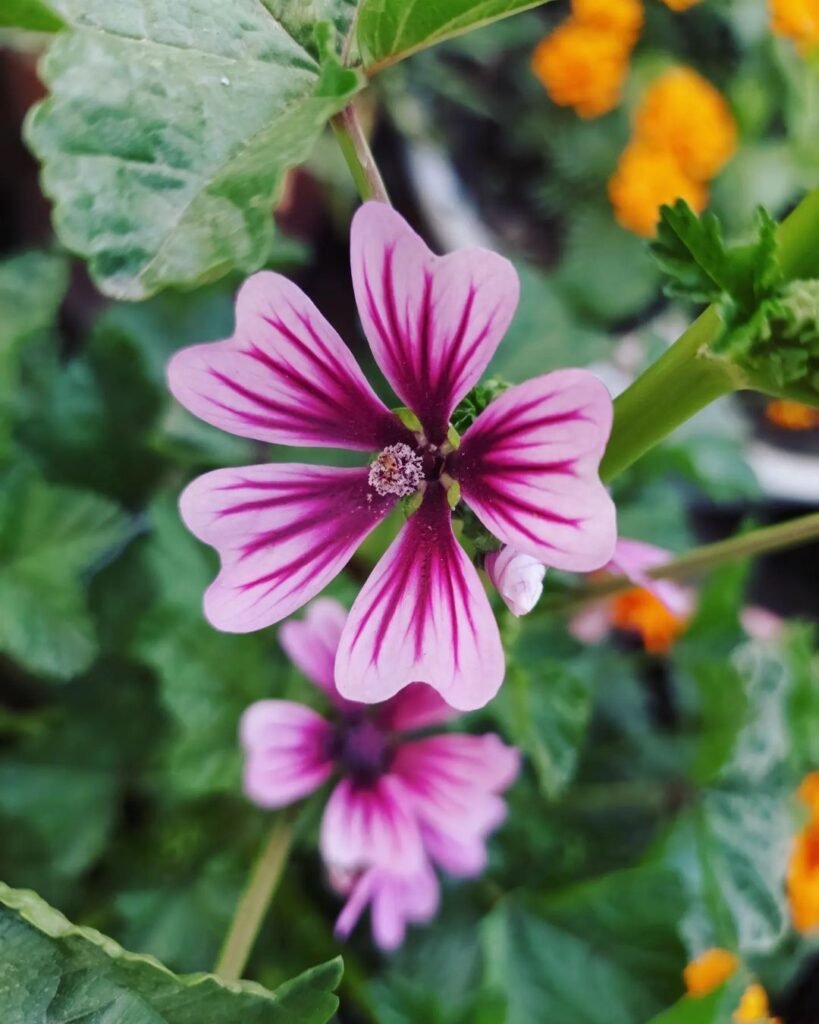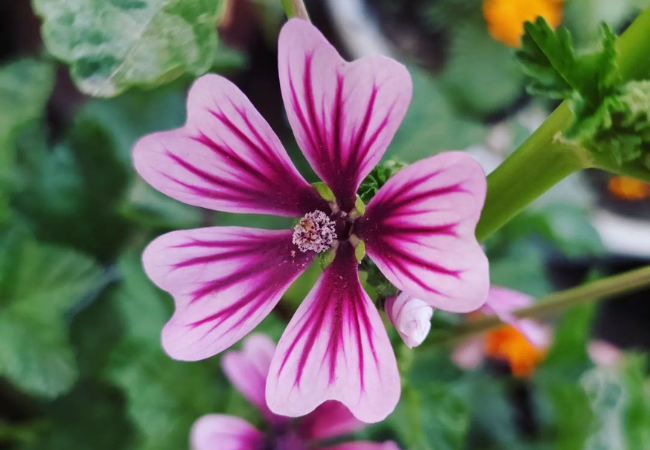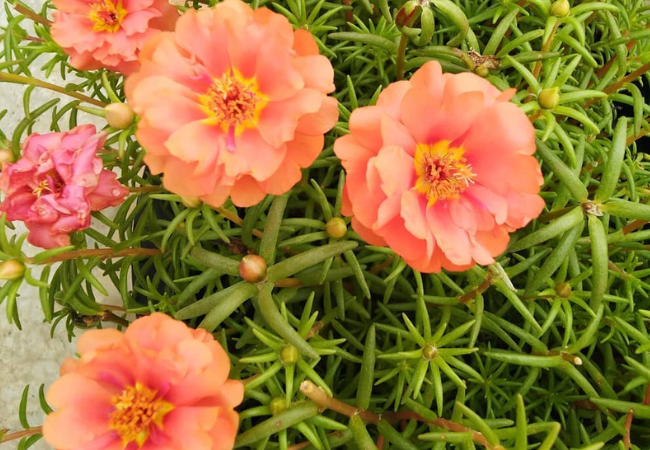Discover the beauty of Mallow flowers. Learn how to grow these easy-care, colorful perennials that add charm to gardens and attract pollinators. Perfect for borders, wildflower garden and natural landscapes.
Mallow flowers, belonging to the genus Malva, are delightful and versatile plants that bring a touch of whimsy to gardens. With their soft, often pastel-colored blooms, mallows have been cherished in gardens for centuries. In this article, we’ll explore everything you need to know about growing and enjoying mallow flowers in your garden.
Here’s an information chart for Mallow:
| Category | Information |
|---|---|
| Botanical Name | Malva spp. |
| Common Name | Mallow |
| Plant Type | Herbaceous perennial |
| Hardiness Zone | Zones 3-9, depending on species |
| Sun Exposure | Full sun to part shade |
| Soil Type | Well-draining, fertile |
| Watering | Moderate |
| Growth Habit | Upright, spreading |
| Height/Spread | Varies by species; typically 1-4 feet tall, spreads 1-3 feet |
| Special Features | Five-petaled flowers in various colors, blooms from spring to fall, attracts pollinators, edible leaves and flowers in some species |
What are Mallow Flowers?

Mallow flowers belong to the Malvaceae family, which includes other well-known plants like hibiscus and okra. Mallows are known for their five-petaled flowers and round, flat fruits often called “cheeses” due to their shape.
Popular Types of Mallow Flowers
- Common Mallow (Malva sylvestris) A tall, showy species with purple-pink flowers.
- Musk Mallow (Malva moschata) Features delicate pink or white flowers with a light musk scent.
- Hollyhock Mallow (Malva alcea) Tall-growing with large, hollyhock-like flowers.
Benefits of Growing Mallow Flowers
- Attracts pollinators Provides nectar for bees, butterflies and other beneficial insects.
- Long blooming period Many species flower from early summer through fall.
- Low maintenance Once established, mallows are generally easy to care for.
- Edible and medicinal uses Some species have traditional culinary and herbal applications.
How to Grow Mallow Flowers
Growing mallow flowers is relatively straightforward. Here’s what you need to know:
- When to plant Sow seeds directly in the garden in spring or fall or start indoors 6-8 weeks before the last frost.
- Where to plant Choose a spot with full sun to partial shade. Most mallows thrive in USDA hardiness zones 3-8.
- Soil requirements Adaptable to various soil types but prefer well-draining soil. Learn about soil types from the University of Minnesota Extension.
- Planting Space plants about 1-2 feet apart, depending on the variety.
- Care Water regularly until established. Deadhead spent blooms to encourage more flowers.
Mallow Flowers in Different Garden Styles
These versatile plants can enhance various garden types:
- Cottage gardens Their informal charm fits perfectly in romantic garden designs.
- Wildflower meadows Include in naturalized areas for a splash of color.
- Herb gardens Given their traditional uses, mallows fit well in herb gardens.
Dealing with Common Mallow Flower Problems
While generally easy to grow, mallow flowers can face some issues:
- Rust Remove affected leaves and ensure good air circulation. Learn more about plant diseases from the Royal Horticultural Society.
- Flea beetles Control with organic methods like diatomaceous earth or neem oil.
Companion Plants for Mallow Flowers
Mallow flowers pair well with other sun-loving perennials:
Using Mallow Flowers in Landscape Design
Mallow flowers offer various landscaping possibilities:
- Mixed borders Use taller varieties as backdrop plants in perennial borders.
- Butterfly gardens Plant to attract and support butterflies and other pollinators.
- Container gardens Grow smaller varieties in pots for patio or balcony displays.
Propagating Mallow Flowers
Mallow flowers can be propagated through:
- Seeds Collect seeds from dried seed heads and sow in spring or fall.
- Division Divide established clumps in spring or fall.
Traditional Uses of Mallow Flowers
Mallows have a rich history of use:
- Culinary Young leaves and flowers are edible and can be used in salads or as a garnish.
- Medicinal Some species have been used traditionally for their soothing properties. Learn more about herbal medicine from the National Center for Biotechnology Information.
Mallow flowers are charming and versatile plants that bring soft colors and whimsical beauty to gardens. Whether you’re creating a cottage garden, planning a wildflower meadow or simply want to add reliable summer color to your borders, mallow flowers are an excellent choice. Their easy-care nature, long blooming period and benefits for pollinators make them a valuable addition to any garden. By incorporating mallow flowers into your landscape, you’ll enjoy a delightful display that connects you to centuries of gardening tradition.
For more information on perennial flowers and gardening tips, visit the National Gardening Association.
For more gardening tips and plant care guides, visit usagardenhub.com.





